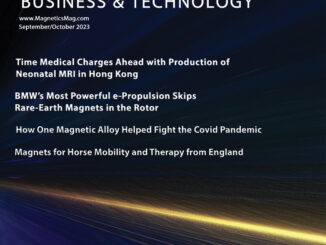By Tony Morcos, President – ACM Magnetics
During my 1990’s gig at a motor manufacturer, I had a wonderful boss and mentor. He was a wise man, street- and book-smart, with strong business acumen. When customers would visit our plant, which was common because of our location in North San Diego County, they would invariably ask, “Who are your biggest competitors?” My mentor’s response, “Our customers are our biggest competitors.” His tacit points were: a) there is nothing magical or mysterious about making good motors; b) we must provide exceptional motors for a fair price, otherwise our customers would bring their motor manufacturing in house or take it to another manufacturer.
While the general trend during the past 20 or so years has been to increasingly out-source work that is lower on the food chain, there are also a growing number of companies bringing such lower-tier work back in house. This is especially true for high-volume applications. There are several reasons why this can be a profitable strategy. Eliminating the markup by the lower-tier vendor is typically the primary reason for in-sourcing. Gaining control of a device-critical process is also a strong motivating factor.
For an OEM whose product employs an electric motor, it can make sense to source the rotor and stator separately, especially in cases where each assembly is employed in different sub-systems within the next-level assembly. Going deeper down the food chain, bringing the coil winding process in house provides flexibility to make simple design modifications and adjustments, and a highly-automated in-house coil winding system can indeed compete with hand-wound coils made with inexpensive overseas labor. Some highly-integrated operations even stamp and stack their own laminations. Likewise, the rotor/magnet assembly for a motor can often be integrated deeper into the bill of materials with individual components, such as magnets, rotor hubs and shafts.
When it comes to in-sourcing magnets, there are limitations. It is very expensive and difficult to bring in house the processes required to manufacture sintered permanent magnets: i.e., fully dense ferrite, SmCo and NdFeB. Still, not all applications require the magnetic energy density of sintered magnets, and injection-molded magnets can fill such applications with a simple manufacturing process quite amenable to in-sourcing.
Many high-volume electromagnetic devices such as motors and sensors utilize injection-molded permanent magnets, both ferrite and NdFeB. The injection molding of magnets requires only a few manufacturing steps and is a net-shape process, producing tight tolerances with no secondary operations necessary. Such permanent magnet materials have the added bonus that the compounding, molding and magnetizing of the permanent magnets can be brought in-house and need not necessarily be performed by a “magnet supplier”.
The process of injection-molding ferrite and NdFeB permanent magnets starts with the compounding of the raw materials: magnet powder, plastic and lubricant. Pre-compounded materials are commercially available, but bringing the compounding process in-house provides maximum cost savings and manufacturing flexibility with a small investment in capital equipment and a bit of an engineering/manufacturing learning curve. Pre-owned injection-molding presses are plentiful and inexpensive on EBay. Mold tooling, on the other hand, must be custom-made for each application. This gives a significant cost and logistical advantage to an OEM having an in-house machine shop capable of fabricating such tooling. Magnetization is the final piece of the puzzle, requiring an investment in a magnetizer and appropriate magnetization fixtures, but this can be a turnkey operation with minimal human intervention.
There are a limited number of manufacturers of injection-molded magnets, with an even smaller number of plastic/magnet material compounders. This supply situation leads to high pricing and limited material choices. In conclusion: a) there is nothing magical or mysterious about making injection-molded magnets; b) there can be significant cost, logistical and competitive advantages to in-sourcing your injection-molded magnets.
 About the Author
About the Author
Tony Morcos has more than 30 years of experience in permanent magnet manufacturing and electric motor/electromagnetic device design and manufacturing. Mr. Morcos has a B.S. and M.S. in Electrical Engineering from the University of Dayton. He can be reached at tony.morcos@acm-magnetics.com.



